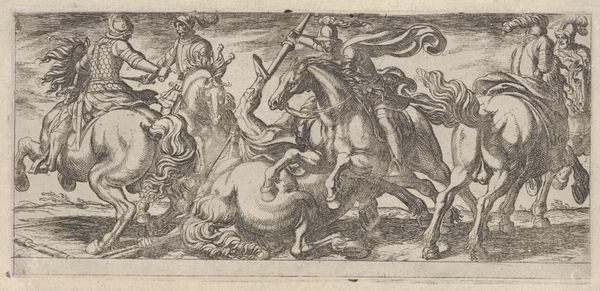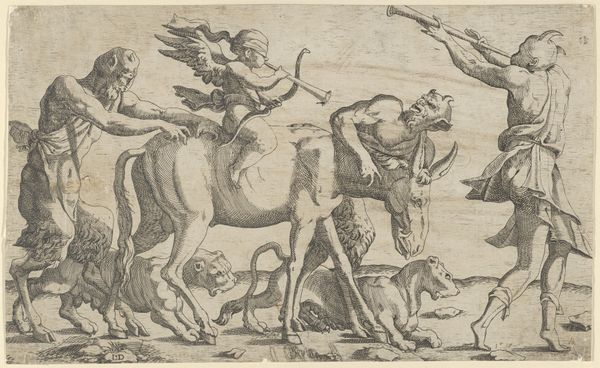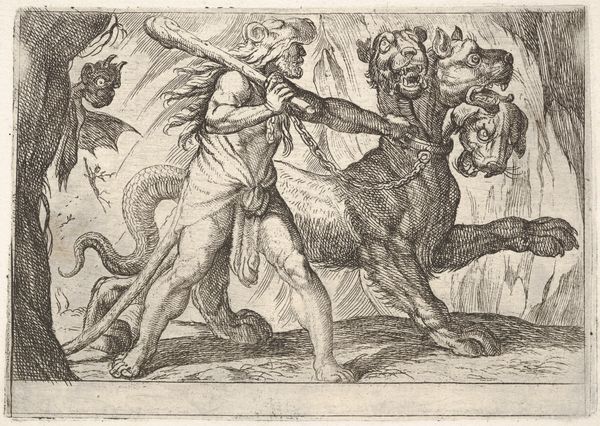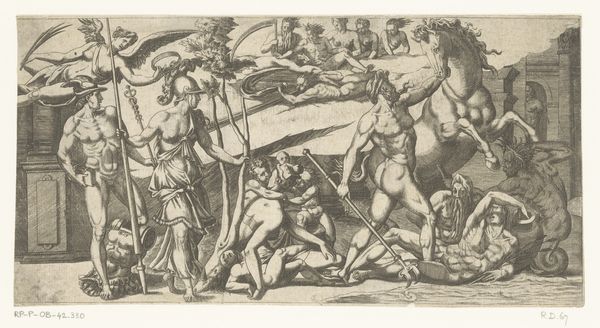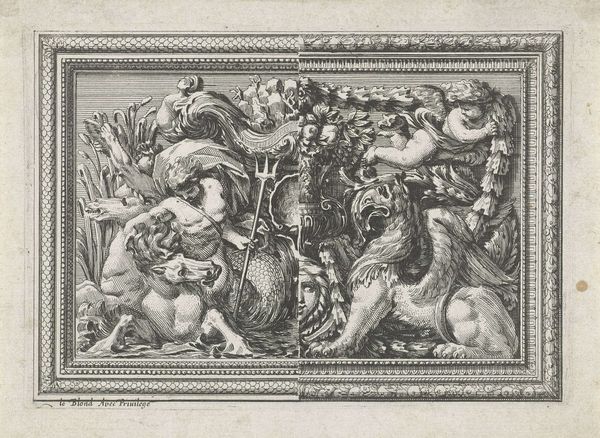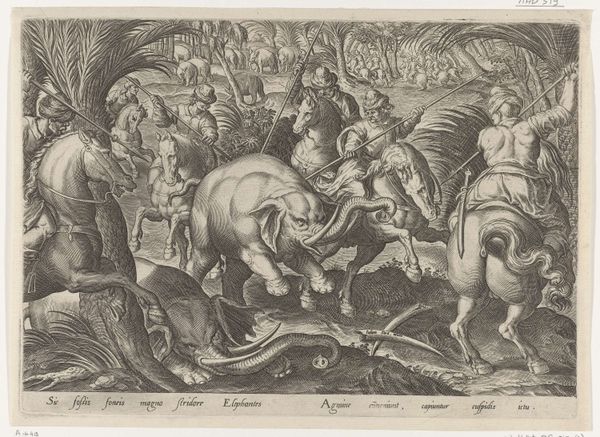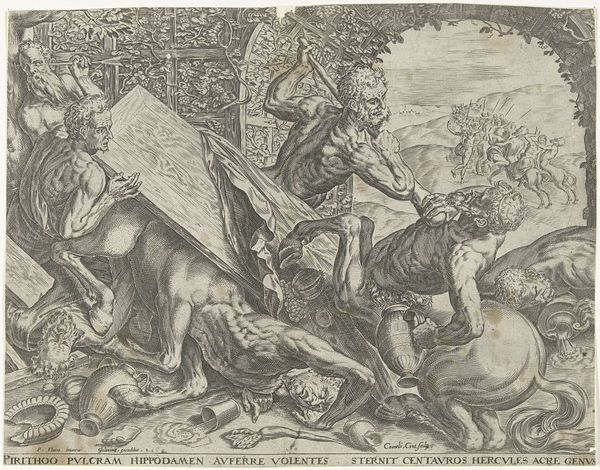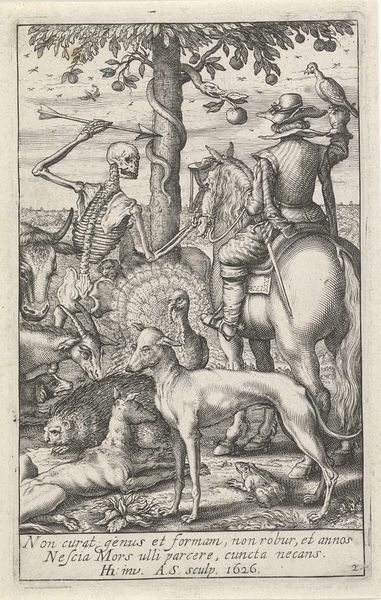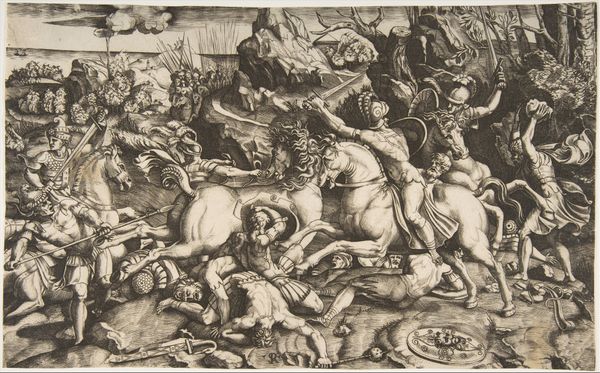
drawing, print, ink, engraving
#
drawing
#
pen drawing
# print
#
figuration
#
11_renaissance
#
ink
#
soldier
#
group-portraits
#
horse
#
line
#
history-painting
#
northern-renaissance
#
nude
#
engraving
#
monochrome
Dimensions: Sheet (trimmed): 7 3/16 × 16 5/16 in. (18.2 × 41.4 cm)
Copyright: Public Domain
Editor: Here we have Léon Davent’s "Battle of Amazons," made in 1547 using engraving and ink. It’s intense! There’s so much movement and detail packed into a monochrome print. How would you interpret the message behind such a chaotic scene? Curator: The "Battle of Amazons" speaks volumes about the 16th century’s fascination with classical antiquity, filtered through a distinctly Renaissance lens. Consider how the print medium itself makes this subject accessible to a broader audience beyond the elite. Editor: Interesting! So it’s not just the subject matter, but also how it was distributed? Curator: Precisely. Prints played a crucial role in disseminating classical themes and artistic styles, shaping visual culture across Europe. Also note the idealized bodies and dynamic composition. Think about how these elements might reflect contemporary ideas about heroism and power. Editor: I see… It’s like Davent is not just showing a battle but also making a statement about idealized strength. Did the intended audience see it that way, or did it have a different impact then? Curator: Good question. We can only speculate about its immediate reception, but images of strong, warring women, often nude, catered to specific tastes among collectors. The very act of acquiring such a print would demonstrate one's status, intellect and education, while revealing inherent gender biases of the time. How does this artwork makes you feel, knowing these historical context? Editor: I guess, more than just admiring the craftsmanship, it prompts me to reflect on who had access to art and what values were being promoted. Curator: Indeed. And recognizing those power structures within art is an important step in understanding history and our present. Editor: This has totally shifted how I view it, beyond just the battle scene. Curator: That is exactly why analyzing art through its cultural and historical context allows for deeper, critical viewing experience.
Comments
No comments
Be the first to comment and join the conversation on the ultimate creative platform.
